Japanese folklore is home to many mysteries and legends. For centuries the Japanese have explained certain strange phenomena by the intervention of divine and superior powers.
Some Japanese deities still have a very important influence on Japanese society today, such as the oni or the Japanese yokai.
The Japanese gods are called kami. They are supernatural beings acting on the human world. There are over eight million Japanese deities, all of whom possess magical and mysterious powers!
 Image licensed from Adobe Stock / KimuraKami photo editing
Image licensed from Adobe Stock / KimuraKami photo editing
In this article you will discover the fabulous world of Japanese folklore through several points and we will see in particular:
- How the Shinto religion works:
- What are the different types of Japanese deities?
- Who are the most popular Japanese gods?
- Who are the Japanese kami in human form?
- What do the four sacred beasts of the land of the rising sun mean?
Let's quickly get to the heart of the matter, and start by looking at the Shinto religion!
The Shinto religion and Japanese culture
Japan has a long cultural tradition that dates back to more than two thousand years before the modern era. Japanese mythology is based on two major sacred religions.
 Shutter Stock Photography / Japanese Torrii Gate
Shutter Stock Photography / Japanese Torrii Gate
1. Difference between Shintoism and Buddhism
Shintoism is an indigenous religion based on the belief of kami. Buddhism on the other hand originated in India and focuses on the belief in the god Buddha. The Zen Buddhism is the main religion of the country. Unlike other cults, this religious practice is not characterized by a particular style of writing or dogmas.
2. Significance of Shintoism
Shinto deities are related to nature to give meaning to natural phenomena such as wind, rain and sun etc... This religion is not based on a notion of good or evil. It is based on faith in the human being and that man is good by nature. In this spiritual concept, bad human actions are due to the influence of evil spirits and demons.
Shintoism is the second largest religion in Japan. It has the largest number of followers behind Buddhism. It is a polytheistic religion where each Shinto deity has its importance.
The different types of Japanese deities
Japanese deities are divided into different classes. There are:
- Yurei ghosts
- The Oni demons
- Paranormal and unexplainable phenomena associated with Yokai,
- And kami spirits, otherwise known as gods
During the Japan Feodal, every phenomenon, be it an earthquake, tsunami, rock fall or whatever; was linked to Japanese deities, magical creatures or fantastic animals!
The creation of the world in particular and the emergence of Japanese islands were associated with the deities Izami and Izanagi. In Japanese tales and legends the gods all have a role to play whether on earth, in the sky, or in the underworld. Here below, the most popular deities.
Popular Japanese gods
1. The Shinigami deity
In the Shinto religion, the god of death, can according to his desire induce humans to die. He penetrates their minds to make them want to commit suicide.
 Adobe Stock License / Geisha Woman and Japanese Death
Adobe Stock License / Geisha Woman and Japanese Death
In recent years, Shinigami have become very popular characters in Japanese culture. One such character is Ichigo, who fights monsters named hollow in the manga Bleach.
In the manga Death Note, high school student Light Yagami uses the death book of the demon Ryuk to cause death around him and influence the world around him at will.
2. The Kitsune Fox
The Kitsune kami is one of the most revered gods in the land of the rising sun. He is the personal messenger of the goddess Inari. He is known for his great powers and in particular his ability to change shape.
 Source illustration unknown / Editing KimuraKami
Source illustration unknown / Editing KimuraKami
In Japanese myths and legends, this magical power is known and recognized because the fox demon loves to deceive humans. In Japanese prints, the fox demon has the appearance of a beautiful woman or an old monk. Although he is very popular, he is a god who sometimes behaves like an Oni. So beware if you cross his path.
3. The Tanuki Deity
The Tanuki has the same polymorphic abilities as the Kitsune. It is associated with the kawaii style for its cuteness and fun. You can see the tanuki pattern printed on many t-shirts, Japanese sweaters, or kimono jackets (haori). The tanuki for its huge "purses!"
The Japanese kami: human
Now we are going to introduce you to the kami in human form, you are going to discover their legendary history!
1. The kami Izanagi
This Japanese celestial deity is considered the first man. He had the mission, along with his wife Izanami, to create the earth.
 Illustration by Milek Jakubiec / Image retouched by Team Kimura / The powerful god Izanagi and his magic spear
Illustration by Milek Jakubiec / Image retouched by Team Kimura / The powerful god Izanagi and his magic spear
The superior kami gave him a golden jewel-encrusted spear called "Amenonuhoko" to create the first Japanese island. This magical object is also called the "spear of the gods."
2. The goddess Izanami
She is the first woman. Izanami and her husband Izanagi, are the creators of the other Japanese gods in human form. The goddess Izanami died while giving birth to her son Kagatsuchi, the Kami of fire.
 Art creation by Thin Nguyen / Image Retouched by kimurakami.com
Art creation by Thin Nguyen / Image Retouched by kimurakami.com
According to Japanese legends, Izanagi entered the Yomi (land of the dead) because he could not bear to lose his first and only love. He did not manage to bring her back from the underworld. She is associated with the goddess of death !
3. Yuki onna deity
Parallels can be drawn between Izanami and the deity Yuki Onna. She is a splendid Japanese snow woman who can be seen in storms!
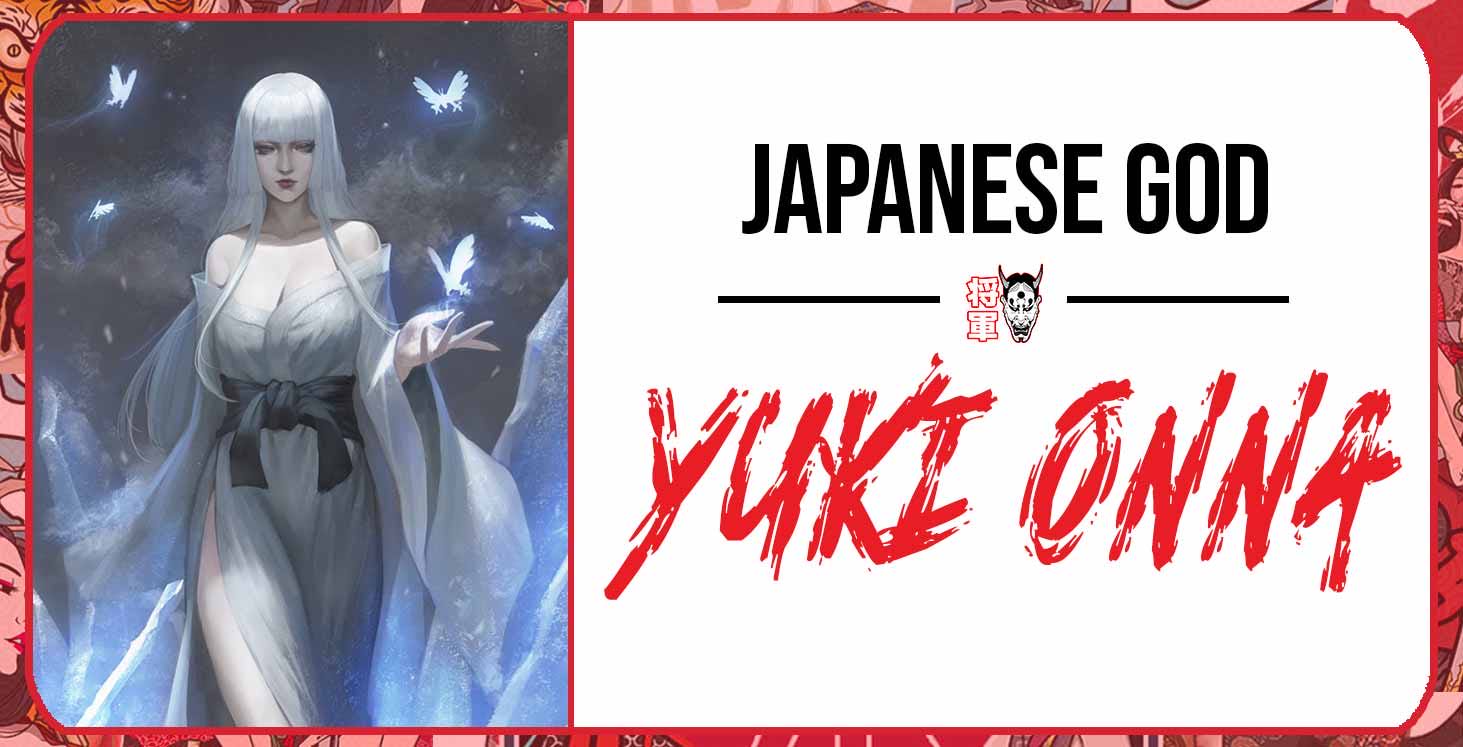 Artist Unknown / Deity Yuki Onna
Artist Unknown / Deity Yuki Onna
Seeing a Yuki Onna may be the last thing you'll ever contemplate. For even though she is a great beauty.... Her heart is as cold as death itself...She wears a simple white Japanese kimono even when the temperatures are close to 0!
4. The god Kagatsuchi
As we saw earlier, the fire deity is responsible for the death of his late mother. Caught in a fit of rage, Izanagi cut him into 8 pieces with a celestial sword. 8 volcanoes were born from his death. And 8 kami were created from his blood. His death also symbolizes the end of the creation of the world.
5. Goddess Amaterasu
Returning from the yomi, the celestial god Izanagi created three of the most powerful kami of the divine world including the eternal sun goddess Amaterasu.
 Drawn by Simon Eckert / Text editing by our design team
Drawn by Simon Eckert / Text editing by our design team
She was born from the right eye of Izanagi. After his birth, he decided to separate the earth and the sky. He offered the sky to Amaterasu which made his brothers jealous of them.
6. The god Susanoo
This Nipponese god was born from the face of Izanagi. He is also the god of the sea and storms. He is known in Asian myths for his angry excesses. In particular, he destroyed Amaterasu's rice fields. The latter locked herself in a cave, which she transformed into a sanctuary.
 Image creation by Jon Neimeister / The god Susanoo facing the demonic Japanese dragon
Image creation by Jon Neimeister / The god Susanoo facing the demonic Japanese dragon
Without Amaterasu's sun, the world fell into an era that was cold and dark, and steeped in a sense of perpetual death. The Japanese Kami decided to organize a ritual of prayers to attract Amaterasu's attention. When she left her cave to ask what the fuss was about, the gods presented her with a new goddess full of light, warmth, and purity.
This convinced the goddess Amaterasu to return to the world of the gods to offer her light to the earth. As for Susanoo, he was exiled to the world of men for his act towards his sister. Once on Earth, he defended villagers from a terrible 8-headed dragon named Yamata No Orochi.
To defeat it, he tricked it by making each of its heads drink a barrel of sake. He took advantage of the eight-headed dragon's moment of weakness to slice them off. He discovered inside the monster the legendary Japanese sword Usanagi. He will give it to his sister Amaterasu to make amends and regain the world of the gods!
7. The god Tsukuyomi
This is the second son of Izanagi, born from his left eye. Tsukuyomi is the kami of the moon.
 Artist Mauro Alocci / The Japanese Moon God flying in the starry night
Artist Mauro Alocci / The Japanese Moon God flying in the starry night
When his father divided the worlds, Tsukyomi decided to ascend to the sky and control the night.
8. The Uke Mochi kami
Uke Mochi is the Kami creator of flora, fauna and food. He was killed by Tsukuyomi, which made it possible to give first food to the men. They discover five different kinds of grains.
From his eyes came the rice seed. From her nostrils came the beans. From his ears came the millet. From his genitals came the grains of wheat, and from his rectum the soybean.
9. THE deity Inari
This is one of the most popular deities in all of Japan. There are more than thirty-two thousand shrines dedicated to his worship. He is the Kami of rice, agriculture and industry.
 Illustration of Conor Smith / Inari deity wearing a white Kitsune mask
Illustration of Conor Smith / Inari deity wearing a white Kitsune mask
This Japanese deity uses white foxes as messengers. Therefore, in some Shinto ceremonies, she is associated with an animal form. These rituals and prayers are used to invoke her to watch over the Japanese people.
The goddess Inari represents a symbol of prosperity and friendship. She manifests herself in different forms, either as an old man or a Japanese woman.
10. The dragon god O-Wata-Tsu-Mi
This name means "The old man of the tides. He is one of the most important gods of the seas. He is also a son of Izanagi. He was born at the time of the purification of Izanagi. He is the master of the oceans.
In Japanese tales he is described as a Kami with a tender and pure heart. He has the power to control the water and the tides. In Japanese tales, he is sometimes depicted as a green Japanese dragon, living in the depths of the sea.
11. The warrior god Hachiman
According to the beliefs of Shintoism, the god Hachiman is the Kami of the Samurai warriors.
 Illustration and editing by Team KimuraKami /Japanese God of War and his samurai mask
Illustration and editing by Team KimuraKami /Japanese God of War and his samurai mask
This Japanese God of War is one of the most mysterious because we don't know his real origin. He is sometimes symbolized by a white dove because as the old saying goes, "who wants peace, prepare for war."
12. The god Namazu
The deity Namazu is the Kami of earthquakes, he is responsible for creating tsunamis. In Japanese myths, he is sometimes represented as a giant fish living underground
13. The seven gods of luck
They are also called the shichifukujin. They bring good luck and good fortune to the Japanese people. They are honored at the end of the year!
If you'd like to learn about other gods in human form, we present a second list that complements this one in our article on the seven gods of luck. We also explain in more detail the importance of Shintoism in Japanese life
Japanese Sacred Beasts
Sacred beasts, refer to the 4 Japanese guardians who protect the four cardinal points. Originally, these creatures are of Chinese origin. But nowadays, it is possible to find Japanese shrines dedicated to them.
1. The heavenly bird: Suzaku
This deity symbolizes the Japanese phoenix that guards the city of Kyoto from the south. It is a magenta-colored bird covered in flames.
 Shutter Stock Photography / Japanese phoenix tattoo facing a snake god
Shutter Stock Photography / Japanese phoenix tattoo facing a snake god
This bird represents the element of fire and is also related to summer. It is one of the most majestic creatures in Shinto mythology.
2. The serpent god: Genbu
 Shutter Stock License / Genbu the Japanese Snake God
Shutter Stock License / Genbu the Japanese Snake God
Known as the guardian of the north, he is a snake that coils around a turtle. It symbolizes the element of earth, and is associated with winter. He is also sometimes depicted fighting a samurai!
3. The Japanese Beast: Byakko
This Japanese divine beast represents a white tiger. Byakko is the guardian of the West. He symbolizes the element of air, and also autumn.
4. The Japanese dragon: Seiryu
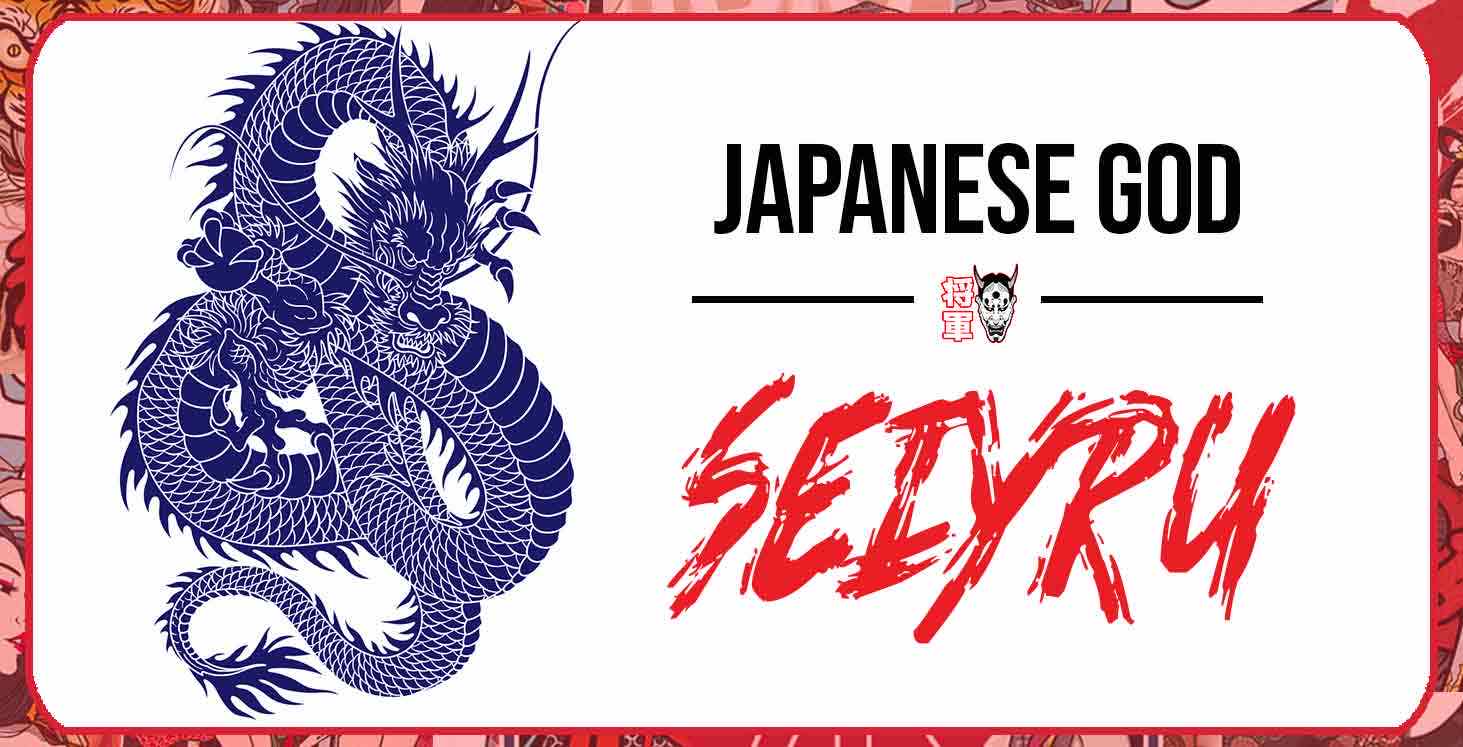 Licensed image from Shutter Stock / The dragon god Seiyru
Licensed image from Shutter Stock / The dragon god Seiyru
Protecting Kyoto from the East, Seiryu is a large blue dragon that represents both the element of water and spring.
Japanese gods related to animals
1. The dragon Ryujin
This is the deity of the sea. Represented by a large dragon, known as the king of the ocean. His roar can cause great disasters.
 Source illustration unknown / The god Ryujin acting on the waves and oceans
Source illustration unknown / The god Ryujin acting on the waves and oceans
The deity Ryujin also has the power to transform into a human being. He also has the power to control all the magical gems of the sea. He is the master of sea animals...
2. The dog god: Inugami
Inugami are creatures depicted as dogs, and their main purpose is to serve as guardians. It is said that to create one, you must bury a dog up to its neck and put food on its forehead so that it cannot eat it.
After the animal dies, it will turn into an Inugami. These dogs attract success and luck.
3. Ebisu kami
He is one of the first sons of Izanami and Izanagi. He is considered the Kami of prosperity and wealth.

This god of fortune is also revered by sailors. That is why he is depicted as a fisherman wearing a hat, and holding a fishing rod in his left hand. He sometimes carries a large fish symbolizing abundance and opulence.
4. The guardian lion: Komainu
This Japanese animal deity is a type of lion. In Shinto shrines, they always come in pairs.
 Adobe Stock License / Japanese Lion Deity Statue
Adobe Stock License / Japanese Lion Deity Statue
They are responsible for protecting these mystical places from evil spirits. They are often seen at the entrance of Shinto shrines next to the Torrii gates!
5. The Japanese goddess of dance: Ama no Uzume
This Japanese female deity is the one who managed to get Amaterasu out of her confinement in the cave. She is the Japanese goddess of happiness, fertility and dance.
It is said that she danced so much that her clothes were destroyed, leaving her naked in front of the other Kami, who laughed so hard that they got Amaterasu's attention.
Conclusion
We have seen in this article that the Japanese mythology is composed of several gods and goddesses. They are the origin of Japanese history and have helped explain centuries of unexplainable and supernatural phenomena.
If you want to know more about Japanese folklore and especially ogres, monsters and warlike spirits then check out our article on the vengeful demon Hannya. But be careful that your soul is not possessed by this evil Japanese spirit while you are reading!"






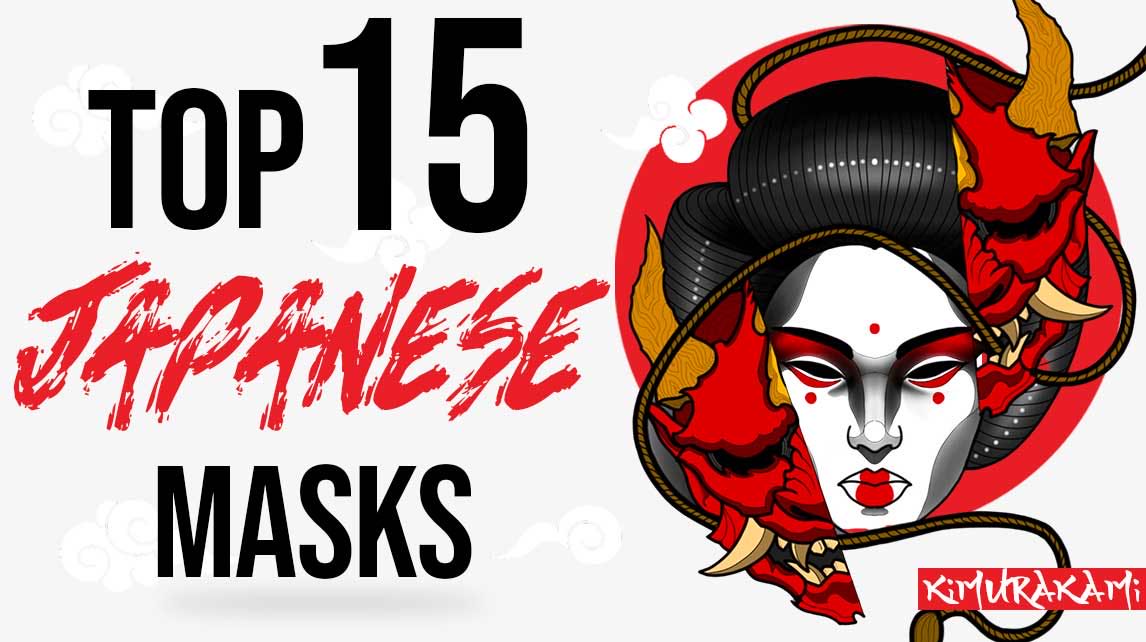

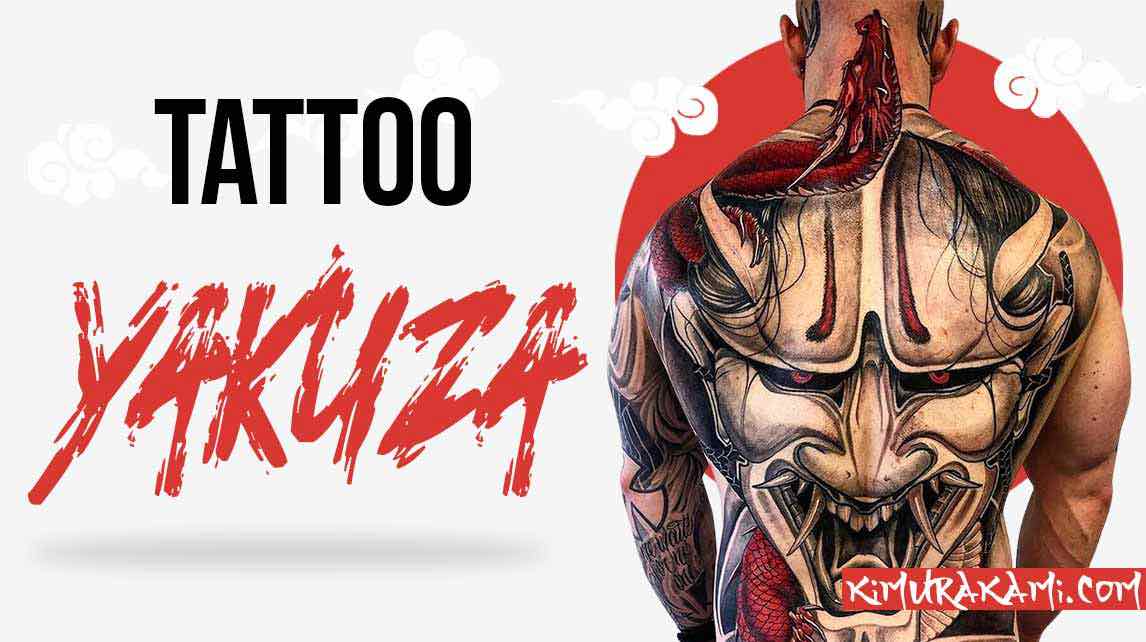
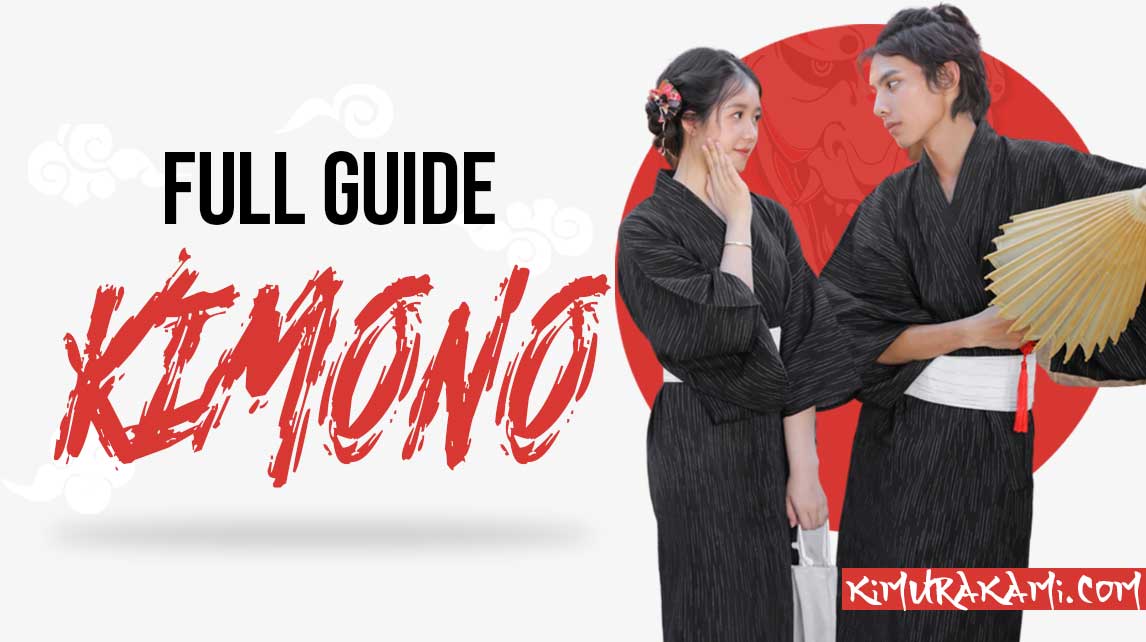
Leave a comment